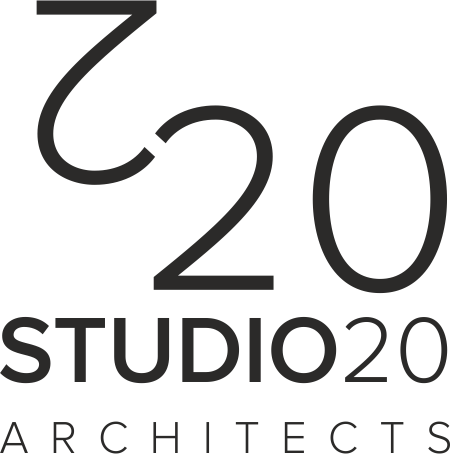London’s design scene moves fast, and architects in the capital face constant pressure to meet building standards, satisfy clients, and keep projects moving without delay. Among the many rules that shape planning decisions, Paragraph 139 has started to shift how architects present proposals and defend design choices. While short on length, this section carries weight across planning meetings, pre-app discussions, and design reviews. Its influence now reaches large-scale developments, small housing projects, commercial upgrades, heritage refurbishments, and even private home extensions.
Paragraph 139 sits within national planning policy and sets expectations for design quality. It pushes architects to raise their game by proving that each project adds value to its surroundings. This requirement matters even more in London, where tight plots, rising density, and character-sensitive areas challenge every new building. Local planning authorities use Paragraph 139 to test how well a proposal responds to context, safety, beauty, function, and long-term value. Architects who handle these points with clarity often gain quicker approvals and stronger support from planning officers.
Key Takeaways
- Paragraph 139 now plays a major role in planning decisions across London.
- It encourages design quality that fits local character while supporting modern needs.
- Strong design statements gain more weight when they speak directly to this paragraph.
- It supports heritage protection, sustainability, and resident wellbeing.
- Architects who use Paragraph 139 effectively often secure smoother planning outcomes.
Why Paragraph 139 Holds New Power
Over the past few years, London boroughs have tightened their design policies. Many now ask applicants to justify design choices with more precision. Paragraph 139 supports this approach by giving councils a clear benchmark for judging proposals. When officers face pressure to reject weak design, they turn to this paragraph for backup. As a result, architects who ignore it place their projects at risk.
The paragraph encourages buildings that suit local character while meeting modern needs. London’s mix of historic streets, post-war estates, and regenerated districts demands careful design. Paragraph 139 highlights this topic directly, pushing architects to show how materials, scale, height, massing, and layout suit the environment around them. This focus does not limit creativity; instead, it pushes design teams to raise clarity and prove that bold ideas still respect local qualities.
Better Design Statements and Supporting Documents
Paragraph 139 has reshaped design and access statements across London. Officers now expect stronger narratives with solid evidence. Architects respond by producing documents that tell a clear story rather than offering generic descriptions. High-quality visuals, context analysis, and precise diagrams now play a larger role.
London architects report that planning officers pay closer attention to the way a proposal meets Paragraph 139’s focus on character, form, sustainability, and long-term value. Those who submit thin or repetitive statements face delays or additional information requests. Meanwhile, teams who produce documents that speak directly to this paragraph often move faster through the planning system.
This change has raised the reputation of architects who treat design statements as strategic tools. Clients notice the difference too, especially when their projects reach approval stages with fewer revisions.
Impact on Heritage Projects
London carries layers of history, and many new developments sit near listed buildings or within conservation areas. Paragraph 139 now plays a strong role here. It encourages sensitive design without freezing a neighbourhood in time. Architects must show how new buildings support the character of heritage assets while meeting today’s performance standards.
This pushes design teams to analyse views, materials, typologies, rooflines, and street rhythm more closely. Instead of just adding a modern building next to an old one, architects now craft proposals that enrich the heritage setting. Councils welcome this approach because it reduces conflict between preservation and progress. Heritage officers often reference Paragraph 139 in their feedback, using it as a tool to ask for clearer reasoning behind design moves.
Raising the Bar for Sustainability
London architects face more pressure than ever to improve building performance, cut carbon, and support healthier living. Paragraph 139, although not a technical sustainability rule, reinforces the idea that good design must serve long-term social and environmental value. Officers interpret this as a call for stronger daylight, ventilation, green infrastructure, adaptability, and material longevity.
Architects now weave sustainability more deeply into the design narrative. Instead of treating it as a separate report, they show how environmental decisions shape layouts, façades, massing, and public realm features. This shift has led to stronger proposals and better results for clients and communities.
A Stronger Case for High-Quality Housing
London’s housing shortage pushes architects to deliver schemes that increase density without compromising quality. Paragraph 139 supports this aim by raising expectations around space standards, natural light, access, neighbour impact, and outdoor areas.
Designers now craft layouts that balance site constraints with resident wellbeing. They highlight how each decision improves living conditions—something planning officers value during review. Projects that meet these points stand a better chance of moving through planning with fewer setbacks.
Housing associations, build-to-rent developers, and small-site builders all benefit when architects use Paragraph 139 effectively. It helps them defend higher density in suitable locations while proving that residents will still enjoy a high-quality environment.
Related Blog:- How Much Does an House Extension Cost in 2025?
Helping Architects Communicate with Councils
One of the biggest shifts introduced by Paragraph 139 is improved dialogue between architects and planning officers. Because the paragraph gives both sides a shared reference point, discussions become more focused. Officers can point to specific passages that need attention. Architects can shape their proposals around these expectations, reducing uncertainty.
During pre-application meetings, design teams that highlight Paragraph 139 early often set a productive tone. Officers recognise that the team takes design quality seriously, which builds trust. In a city where planning departments face heavy workloads, this trust can translate into smoother communication throughout the project.
Encouraging Innovation with Context in Mind
Although Paragraph 139 stresses design quality, it does not push architects toward safe or plain schemes. Instead, it asks for bold moves backed by strong reasoning. Many London teams have used this paragraph to justify innovative forms, contrasting materials, modern interpretations of historic patterns, and new approaches to public space.
When architects show how a striking idea still fits within the broader context, officers tend to support it. The paragraph gives them room to defend ambitious architecture as long as the proposal adds value to the neighbourhood. This balance between creativity and responsibility has helped London maintain its reputation as a city with world-class design.
Why Clients Benefit from Paragraph 139
Clients may not know Paragraph 139 by name, but they feel its effects. Better design statements, clearer layouts, stronger sustainability principles, and more focused planning meetings all lead to more effective projects. The paragraph helps architects justify investment in good design, pushing clients to support quality instead of cutting corners.
For developers, the paragraph offers a strategic advantage. A well-presented scheme that meets its requirements can move through the planning system faster, cutting delays and reducing uncertainty. For homeowners, it helps architects produce proposals that stand on solid ground, which is valuable in conservation areas or neighbourhoods with sensitive character.
The Future of Paragraph 139 in London
As London continues to grow, Paragraph 139 will likely shape more policies, design codes, and review processes. Councils use it to push for better project outcomes, and architects use it to defend their ideas with stronger logic. The paragraph bridges the gap between national policy and local character, giving London design teams a meaningful tool in a complex planning landscape.
Architects who treat this paragraph as a central part of their design strategy will stand out. They will produce stronger documents, hold more persuasive planning meetings, and give their clients clearer pathways through the approval system. In a city where pressure on land, heritage, community needs, and environmental goals keeps rising, Paragraph 139 offers a framework that benefits all sides.
FAQs
1. Why does Paragraph 139 matter for architects in London?
It shapes how planning officers judge design quality, making it a central part of approval decisions across many boroughs.
2. Does Paragraph 139 limit creative design?
No. It allows bold ideas as long as architects present strong reasoning and show that the proposal adds value to its surroundings.
3. How does Paragraph 139 affect small residential projects?
It guides officers in assessing character, quality, and neighbour impact, which helps homeowners and architects craft stronger proposals.
4. Does the paragraph influence sustainability choices?
Yes. While not a technical rule, it supports long-term environmental value, so architects highlight sustainability throughout their design narrative.
5. What benefits do clients gain from projects shaped by Paragraph 139?
They gain better justification for design decisions, smoother planning discussions, and often quicker approvals.





